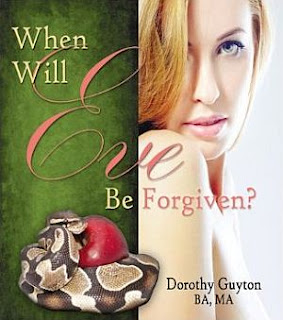There are many types of gardeners, therefore you will see many different garden designs. Some people enjoy structure in their garden while others prefer a wild flower type of look. Expressionist gardeners put emotion and creative thought into their gardens and feel rewarded for their efforts. They are peerpetually changing their gardens - adding new plants, reworking beds, and changing flowers and vegatables with the seasons. Neither garden is WRONG. Just DIFFERENT.
It has been noticed in older gardens of Black People in rural Southern regions of America, "experienced objects" are used in their gardens. In Black People's gardens marigolds bloom in butter kits, geraniums glow in punctured dishpans, or in old objects used for washing or cooking, but nothing went to waste. You may see old water troughs, chicken feeders, washing machine tubs, old barbeque grills, and tires; throw-aways from society used for ornamentation. Miscellaneous items awaiting reuse were not trash. There are flowers planted without a plan but cherfully blooming from their helter skelter places (Westmacott's study, Alomar and Brown). Many believe the new gardening style of repurposing items for the garden originated from this style of gardening of Black people in the rural South.
You may also notice old rambling roses in these landscapes. In the post-Cival War era, there were formally enslaved Blacks who returned to the gardens they worked so hard to create. They went back to the burned down Antebellum homes and saved the heirloom plants (plants passed down from person to person. Many without names). They saved the aristocrats gardens. Even though their being enslaved did not hold fond memories, the plants they loved and nurtured while being enslaved did.
English/Cottage Garden Style: Blossoming in popularity during the Elizabethan era (1558–1603), English or Cottage gardens are marked by a tangle of informal, free-flowing ornamental and edible plants. Think charming plots of land brimming with rambling rose bushes, overgrown grasses and mixtures of flowery shrubs spilling out over stone paths. These gardens can include arbors, arches, fences and trellises. These structures are designed to not only go well with the garden but also the house and overall theme as well. To achieve this look:
- Plant
informally, creating a random effect that looks natural.
- Choose
traditional plants such as Alchemilla mollis (Lady’s Mantle), lavender,
roses, and geraniums.
- Add in edibles
like apples, pears and pitless produce like strawberries or black
currants.
- Minimize maintenance by selecting plants that aren’t susceptible to pests and disease.
Japanese Garden Style: this garden is exotic, with Zen-like minimalism. It is considered an art form dating back thousands of years. A Japanese garden should be graceful, well-balanced, and subtle. Water features are heavily used, such as a fountain, pond, water bowl or awaterfall, The use of rocks and boulders also help to create the atmosphere that you’re looking for. Plants used to achieve this look include:
- Bamboo
- Azalea
- Lilyturf
- Burning Bush
- Japanese Maple
- Magnolia trees
Italian Renaissance Garden Style: Inspired by the elegant grounds of ancient Rome and Greece, Italian Renaissance gardens conjure images of medieval villas with manicured landscapes, grand fountains and effigies of mythical deities carved from marble. Beauty, symmetry, and order are key elements of this garden style. To bring a bit of Italy to your backyard:
- Spread pea gravel on the ground
- Put out a cafe-style table andchairs
- Plant low box hedges
to create boundaries
- Line stairways,
terraces, or paths with small trees or topiaries in terra-cotta pots
- Add water features.
Dutch Garden Style: The Netherlands is flat, and therefore so are Dutch gardens. Effective use of limited space often plays a key role. Techniques, such as pruning and guiding trees add interest to the gardens. Much attention is paid to wildflowers and the existing biodiversity already in existence in the area. To emulate the country’s distinctive gardening style:
- Add geometric shapes
to the landscape with hedges.
- Take advantage of
straight lines by hemming concrete walkways with topiaries or miniature
trees. This gives the space a formal feel.
- Include modern furniture and water features like a reflecting pool and trickling fountain.
French
Provencal Garden Style: The
French Provencal Garden is distinguished by bucolic elegance. Ideally a French
garden will be clean, elegant, and sophisticated. To achieve a French-style
garden, use a lot of green and white within the space.
Moroccan Garden Style: A fusion of Moorish, Islamic, and French design influences lush, serene Moroccan gardens. Think bold colors, glazed patterned tile, textured baskets, and cushy poufs. Typically built within interior courtyards, Moroccan garden style is all about outdoor living. Moroccan garden design lends itself to incorporating a hybrid of a desert and tropical theme within the space. You should incorporate:
- Hardscape
features, which could include seating walls
- Fire pits
- Archways
- Raised
planters.
Chinese Garden Style: For 3,000 years, Chinese emperors, kings, nobility, and scholars loved their gardens. Traditional Chinese gardens reconstruct scaled-down versions of the larger landscape. Chinese gardens incorporate some of the same plantings and hardscape as Japanese gardens. The overall feel instills a sense of peace and tranquility. Chinese gardens typically contain:
- Ornate pavilion
- Other smaller structures
- Winding paths
that link to intimate, quiet, peaceful settings for contemplation and
meditation.
Spanish Garden Style: Taking cues from Roman, Persian and Moorish design concepts, Spanish gardens combine Bougainvillea, begonias, cactus, andfruit trees (figs and citrus). Most are enclosed within walls or courtyards. Other elements to include:
- Terra-cotta pots
- Decorative
water features
- Built-in grill islands
- Brick fireplace
- Low-voltage
light fixtures.
Alpine Garden Style: Influenced heavily by nature, Alpine garden style features high-altitude horticulture interspersed with large boulders, cobbled paths, gravel beds, waterfalls and naturalrock retaining walls. Sprinkle in randomly placed vegetation and wildflowers in nooks and crannies. Create the alpine vibe by planting:
- Blackcurrants
- Gooseberries
- Raspberries
- Groundcovers of primula or creeping thyme, scattered about for a natural look.
















No comments:
Post a Comment